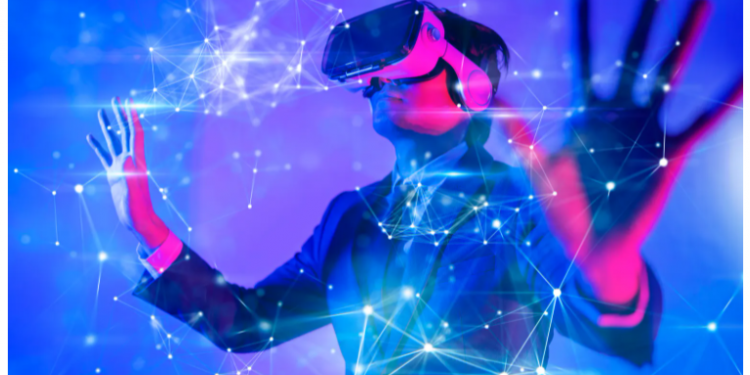Despite all of the excitement, we are still a long way from reaching the stage of development when anything is possible at any time in a hypothetical digital world. Any company that claims to be “metaverse ready” is just deceiving its customers.
In the metaverse, the terms “meta” and “universe” are combined to form the phrase “metaverse.” Web 3.0 is the term most often used to allude to a future version of the internet, which is also known as Web 3.0. As online 3-D or virtually integrated worlds gain in popularity, it is projected that users will be able to enjoy virtual and augmented reality experiences.
What is the Metaverse and how does it function?
The metaverse is a network of interconnected digital platforms, which includes virtual and augmented reality platforms, among others. It is seen as the next frontier of the internet, as well as a big commercial and financial potential by the IT industry and other enterprises.
Work, connect with friends and business associates, travel to remote locations, and access educational opportunities will all be possible in this new and exciting world of technology. Users will be able to work in 3-D virtual or augmented reality environments, as well as communicate with friends and business associates.
Metaverse Examples
There is a diverse spectrum of experiences available in the metaverse. In the future, however, it will refer to a continuous stream of immersive digital experiences that users will be able to access and utilise to participate in a variety of different activities in entirely digital environments. Many different digital environments and experiences are being developed by companies nowadays in order to provide more realistic and immersive digital interactions. With applications ranging from augmented reality collaboration platforms to work efficiency aids for remote teams, the technology offers a wide variety of possible applications.
Second Life, Minecraft, and Fortnite are just a few examples of modern internet-enabled video games that include elements of the metaverse. Users from all around the globe may participate in these immersive social and virtual experiences, which are available in a permanent virtual environment. The metaverse, which is not the same thing as virtual reality, will provide additional opportunities for this kind of experience.
Meta Platforms (previously Facebook) and Microsoft are two of the firms that are aggressively investing in social virtual reality (VR). These businesses want to develop social platforms where individuals can communicate and collaborate while working from home or on the road, thanks to Microsoft Teams.
Horizon will soon enable smartphone users to engage with virtual reality avatars, in a similar way to how Fortnite and Roblox allow mobile users to speak with users on PCs, consoles, and other platforms. Horizon will be released in the near future. It’s scheduled to premiere in 2019.
As a result, some users will be able to engage with their virtual reality avatars using headsets, while others will be able to communicate with their virtual reality avatars using controls on their phone displays. However, even if the games listed above may be played on mobile devices, the controls are not simple. Because game consoles are capable of managing their avatars in space, it is possible that Meta will provide them access to Horizon as well.
Bottom Line
The conclusion is that, although the metaverse is ablaze with enthusiasm, the vast majority of it seems to have been manufactured by technology and social media corporations themselves. It remains to be seen if any company’s metaverse concept is technologically feasible or commercially viable in the long run. Investors who are considering the metaverse as a potential financial opportunity should proceed with caution and patience.






